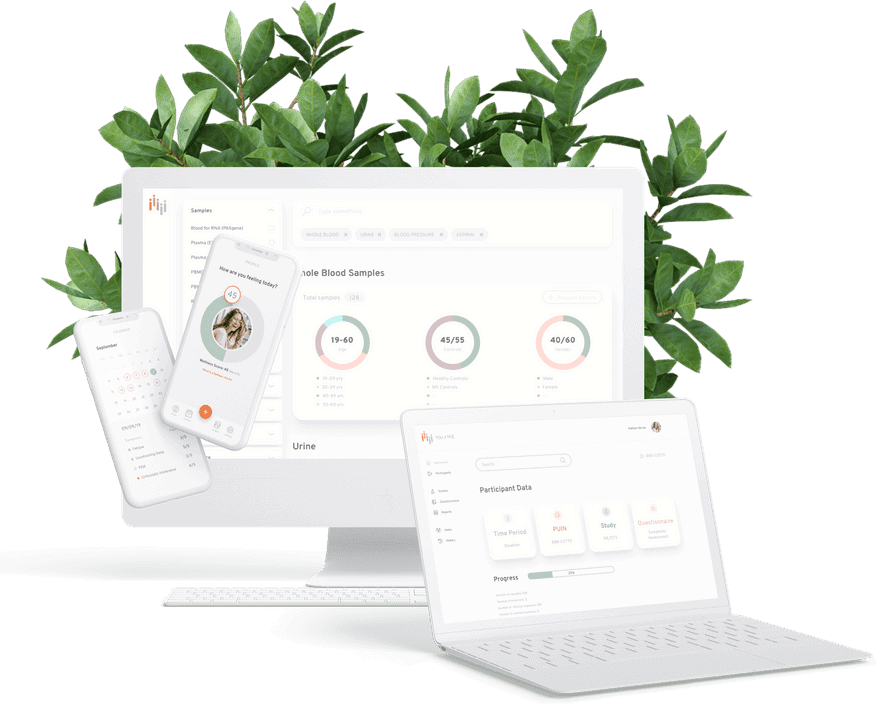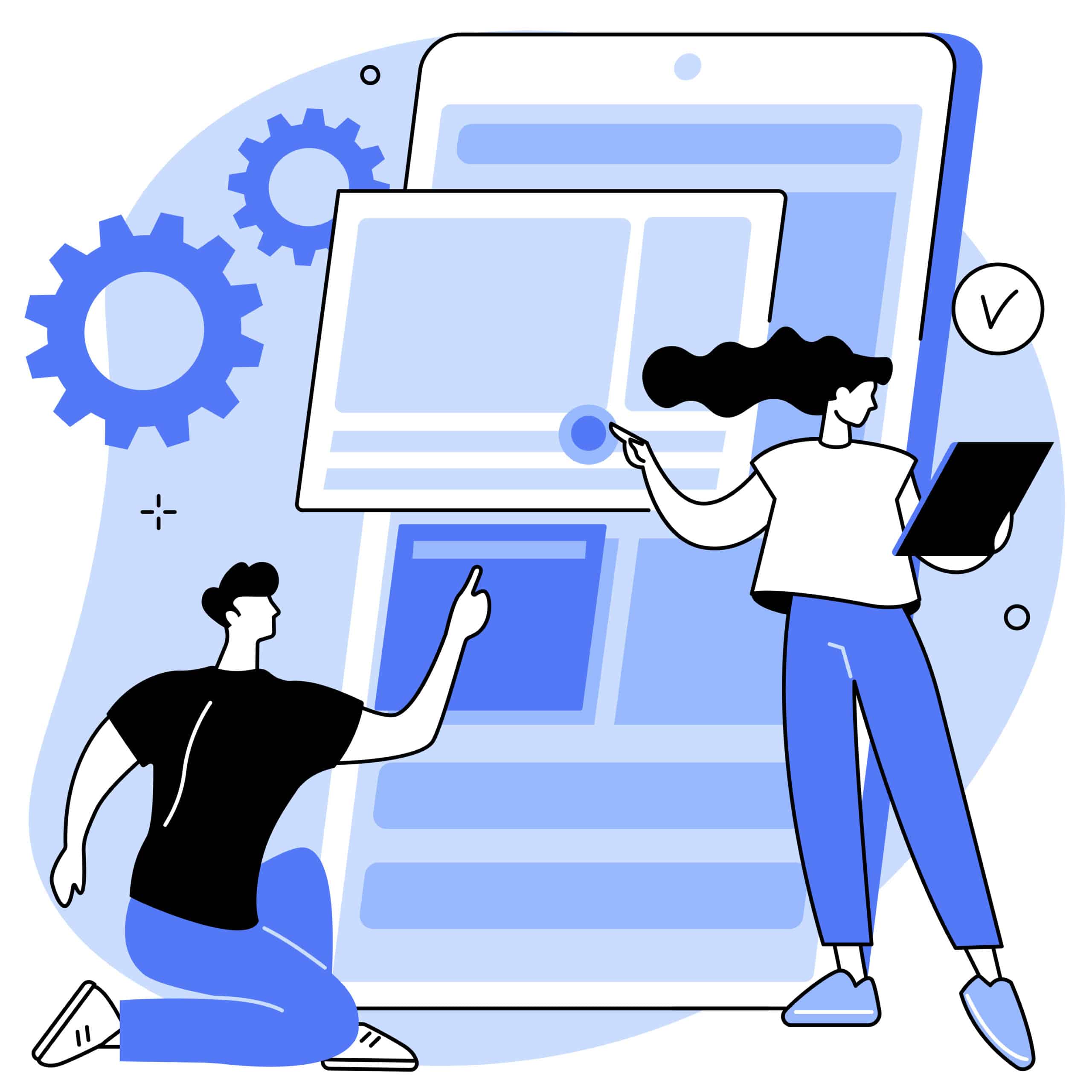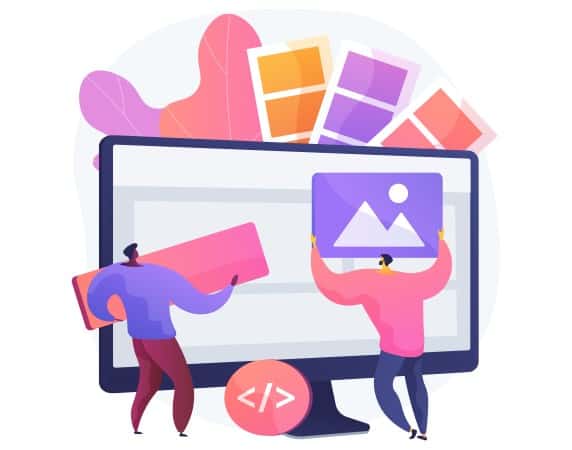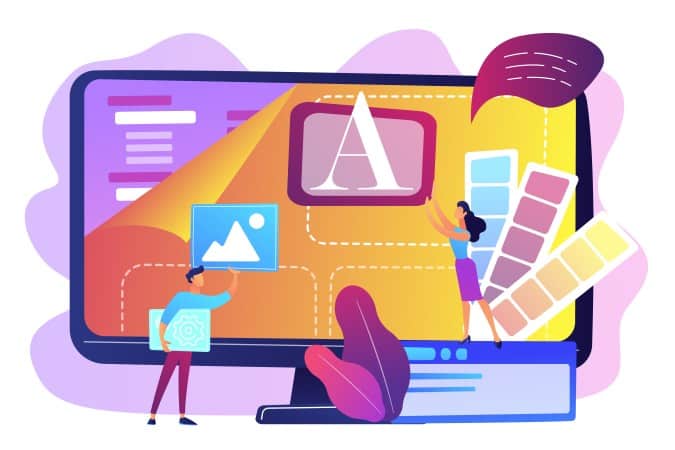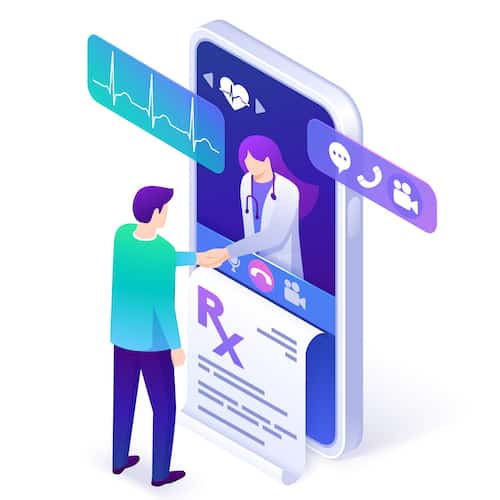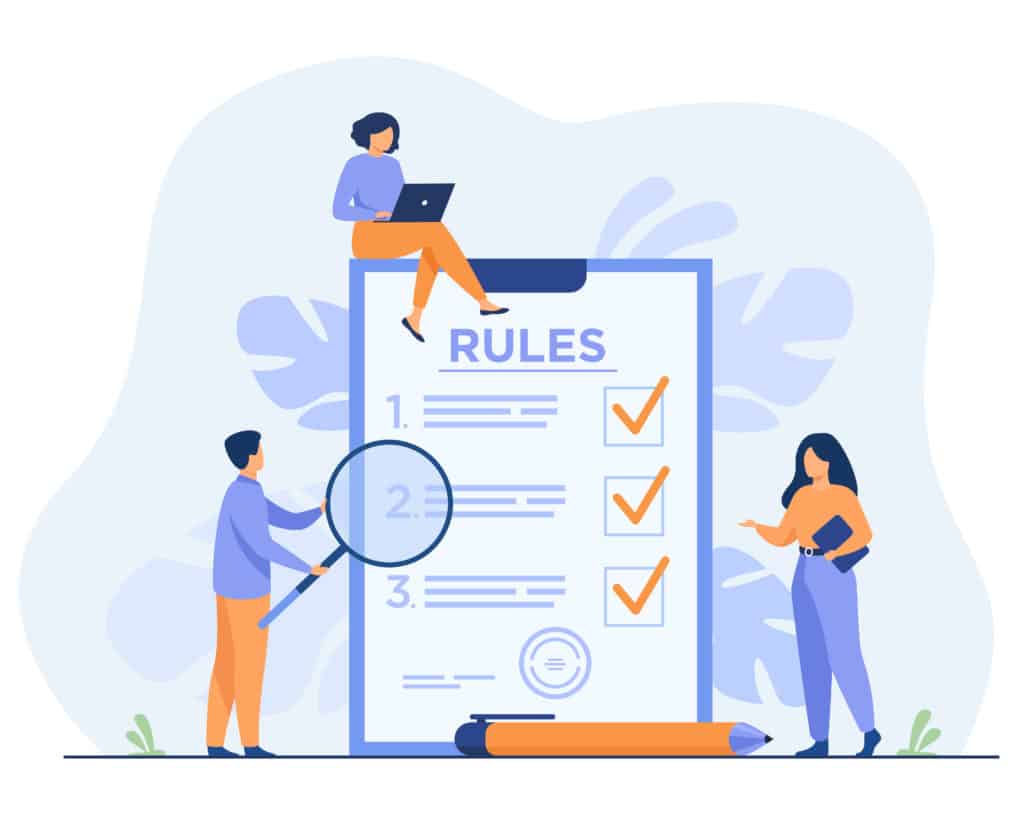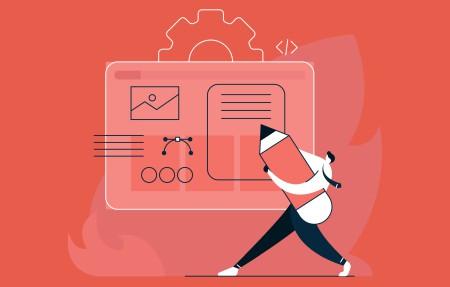Coding is hard. Coding a HIPAA-compliant, efficient, and genuinely helpful healthcare app that actually improves the lives of your patients or your service providers? Even harder. Maybe you have a small company that doesn’t have the resources or bandwidth to hire a talented tech team, maybe your tech department is already strapped for time, or maybe you don’t have $150,000 to spend on developing a healthcare app. Regardless of the reason, coding a healthcare app from scratch isn’t always in the cards for your business.
Not wanting to be left behind as healthtech progresses all around you, what’s the solution? A rising contender in the development field are no-code platforms. No-code platforms can offer an accessible option… with some caveats.
Table of Contents:
1. What is No-Code Development
2. HIPAA-Compliance: The Biggest Hurdle for Healthcare Apps
3. Step-by-Step Guide: Using No-Code Development to Deliver a Healthcare App
- Step 1: Refine vision
- Step 2: Find a no-code platform that fits your use case
- Step 3: Build a prototype from pre-built components
- Step 4: Iteratively develop and test your app
What Is No-Code Development?
Before we delve into the pros and cons of no-code development, we should define what no-code means. No-code doesn’t mean there isn’t any code involved, as a no-code platform needs code to be developed in the first place. When we say no-code, we mean no code is needed on your side of the equation.
Typically, this is seen as a dedicated platform for no-code, such as a website or software. An infamous example of this is Webflow. With Webflow, a website can be built with a simple click of a button and drag-and-drop elements. No coding is needed to build a fully-functioning website. This model has been proven successful, Webflow has 3.5 million users worldwide.
The Pros and Cons Of No-Code
The most obvious benefit of a no-code development method is the low barrier to entry. If you know the most rudimentary controls for your computer, then you can create a healthcare app. Of course, in the case of a healthcare application you’d want to consider what no-code platform offers HIPAA compliance and offers other health care privacy-related services.
TTM, or Time To Market, is significantly lower with no-code development than traditionally developing your healthcare app. Traditional development is so flexible, it’s hard to pinpoint exactly how many hours it can take, but we have estimates based on our own experience in app development with You & Me. It took around 700 hours all things considered. Using a dedicated no-code platform, you can have an app out in a matter of days according to TechBeatly.
The time spent isn’t only important for getting your product out to your patients; getting your product out before your competitors is just as critical. Imagine, your competitor begins developing a similar app to your idea, but they are traditionally developing while you’re opting for no code. By the time their app is developed, your app is finished, established within the customer-base, and has a plethora of positive reviews on the App Store. No-code gives you a chance to get your ideas out there, before someone traditionally developing can.
An added bonus to no-code methods is how they handle all the updating. The platform themselves update and handle the bugs so you don’t have to. It’s up to the platform itself to keep assets from breaking each other, up-to-date with latest operating systems, and overall improving the assets that their customers have access to.
TCO, or Total Cost of Ownership, is significantly lower when you choose to develop a healthcare app through a no-code development. Siemens shared that while the cost of traditional development cost $147,915.00, using a low-code platform like Mendix cost on average $36,978.75. In this case, using Mendix will save you on average 75%.
Overall, no-code app development is incredibly convenient. You don’t need any programming knowledge, a tech team, or expensive software to get started. A lot of no-code platforms have free trials or low subscription costs, making them an affordable option in comparison to the salaries for a full team of professional coders.
Sound good so far? Unfortunately, no method of development is free from flaws. Here’s the main ones we see with no-code development.
A massive drawback to no-code platforms and software is the lack of flexibility. What you can build relies completely on what was already built by someone else built for your no-code development platform of choice. Unfortunately, this means that what you can do in your low-code platform can be, and possibly has been, done by someone else. It also could mean that a competitor could see what you’ve done and copy it for their business. Because of this, there are limited ways to innovate within a premade no-code platform.
Also Read: A Guide to No/Low Code App Development
Another con to no-code delivery is the hurdles of scalability on two fronts. Scalability isn’t necessarily impossible, but both scaling in features and in users come with some unique hurdles to no-code development.
When it comes to scaling in features, you are limited to what your no-code platform knows how to do. Does your platform’s development team know how to implement the features you want? Do they know how to make a HIPAA-compliant appointment and billing app? Are they able to create a multifaceted pain tracker for an academic study you’re running about inflammatory pain? There’s a chance that the no-code platform you’ve gone with isn’t able to create what you truly want.
The second front you may face with scalability has to do with the users of your app. Many no-code platforms just don’t make sense anymore once you reach somewhere in the ballpark of a few hundred to your first thousand users. To put it simply, an app has scalability regarding users when it can handle increased resources without affecting user experience, especially when it comes to performance. Many no-code platforms are just not built to withstand as big of an audience as you need it to.
That being said, these cons can be avoided in part with research towards the no-code platforms you are choosing from. Finding out their abilities before you invest, looking through their portfolio and case studies, and even asking if their platform can handle a couple thousand users (or more, if needed) are all actionable steps you can take to prevent these negative side effects
There are a few more cons that aren’t as easily avoidable, unfortunately. One of these cons has to do with the ownership of your app; you are not the sole owner of your software. In traditional development, you own the IP to every line of code in your app. On the other hand, the no-code platform you choose to work with owns the code of your app. In this case, you only own the idea and the data.
Furthermore, here’s a con that’s specific to the healthcare industry; legacy systems. This isn’t necessarily a con of no-code development so much as the infamously outdated legacy systems themselves. If your app requires information from that legacy system, transferring from that legacy system to what you’ve developed using no-code can be incredibly difficult. That being said, it can also be difficult to deal with the outdated legacy system in the first place; in some cases, it’s trading one difficult situation for the other.
No-Code Becoming Present in Healthcare
Developing apps has become especially appealing in healthcare spaces. But why? Professionals in the healthcare industry have been struggling to overcome the hurdles associated with the outdated legacy systems. Technology has progressed all around them, but now many healthcare businesses are stepping it up; not just to be up-to-date technology, but to use that technology to aid the medical service providers who have been overworked and understaffed since long before the pandemic.
A problem seen with traditionally developing apps in the healthcare industry is that with this sudden boom of healthtech is that there are current problems within healthcare, but traditional development can take months or longer to create a healthcare solution that needed to be implemented yesterday. This makes no-code especially appealing to healthcare providers and associated healthcare companies because the solutions they are passionate about can potentially be solved quicker, and easier, than ever before.
If you’re looking to start a billing application for your practice, do you really have time to learn code and traditionally develop your healthcare app? Most likely not. If you’re running a healthcare startup, or even a full-on enterprise, you likely won’t have time either. What takes very little time to learn and use, however, is a drag-and-drop low-code platform.
Related: A Guide to Custom Developing a Healthcare Application
When it comes to real-life examples of healthcare apps being built through no-code platforms, there are quite a few success stories. One healthcare-related web app developed on a no-code development platform is ImmuneCorps. It’s a simple platform that allows people with low-risk to COVID-19 to volunteer and help those with a higher risk of health complications from the recent coronavirus in NYC and the Bay Area. It was built on the Zeroqode platform, which has options for beginning your project from $99 to a few hundred dollars for most website templates.
Another example is Valcourt Behavioral Health, who used the no-code platform LowCode Agency to develop an app to streamline the patient billing process. They ended up shaving off 10 hours of labor per week on average after creating their billing app, which allowed them to allocate their hours to more important tasks within the company.
HIPAA-Compliance: The Biggest Hurdle For Healthcare Apps
HIPAA, or the Health Insurance Portability and Accountability Act, is a federal law that you are required to comply with as a healthcare or healthcare-adjacent company in the United States. The law requires companies and entities to maintain the privacy of PHI, or Personal Health Information, from your patients and/or clients. Any company or entity that handles PHI is required to follow HIPAA regulations.
How Do I Know If I Need To Follow HIPAA Regulations?
Thankfully, the both U.S. Department of Health & Human Services and the CDC have laid out exactly what qualifies you as a company that is required to follow HIPAA regulations.
Healthcare providers, anyone who deals with healthcare plans, healthcare clearinghouses, and business associates in the healthcare field are all required to follow HIPAA regulations. The only exception is healthcare plans with fewer than 50 participants administered solely by an employer and maintains the plan is not held by an entity of any kind.
The shorter version? Like we said before, every company, entity, and business associate who handles PHI at any point is required by law to follow HIPAA regulations.
Related: HIPAA Compliant App Development Guide
Is HIPAA-Compliance Even Possible In No-Code Development?
HIPAA-compliance is completely possible in no-code development, regardless of what part of healthcare your company plays a part in.
However, HIPAA-compliance isn’t offered through every no-code development platform, so you’ll need to do your research before choosing a no-code development platform. Some platforms that are HIPAA-compliant include Drapcode, Caspio, and Xano. Whether these companies will have the other non-HIPAA features you want for your healthcare app, however, depends on your project. And of course, there is one more consideration to make regarding HIPAA-compliance.
Encryption Concerns and HIPAA
The biggest concern with HIPAA-compliance in no-code app development is encryption. For the unacquainted, encryption is the act of converting information or data into code that prevents unauthorized users from accessing said information.
In HIPAA-compliance, when that information is encrypted is especially important. When it comes to true security for PHI, the information should be encrypted both at rest and during transfer. But what does that mean?
There are two main types of encryption. File encryption is protecting information that is “at rest”, otherwise known as being stored on a device or in the cloud. Transfer encryption is the act of encrypting that information during the “at transfer” stage when moving the information from one storage device or cloud server to another.
The problem that is found with encryption in regard to HIPAA regulations is that often, no-code platforms (and some traditional developers to) only consider at rest encryption, forgetting or simply forgoing at transfer encryption. This means, in regard to PHI, it is not completely secure as it becomes exposed during the transfer of said information. For an app that is truly HIPAA-compliant, it is absolutely imperative that you make sure your no-code platform of choice engages with both modes of encryption.
Step-by-Step Guide: Using No-Code Development to Deliver a Healthcare App
Decided you want to go with a no-code development method? Great! Here’s a step-by-step overview of how no-code app development can simplify the process of building a healthcare app:
| Step | Description |
|---|---|
| 1. Refine the Vision | Define your app’s purpose, target audience, and must-have features. Ensure clarity before proceeding. |
| 2. Research | Find a no-code platform that supports your app’s required features and ensures HIPAA compliance. |
| 3. Prototype | Build a prototype to test navigation and user flows. Gather feedback and refine before full development. |
| 4. Develop and Test | Iteratively develop and test your app using in-house QA, public beta testing, or a combination of both. |
Step1: Refine Your Vision
First, you’ll need to refine exactly what you want out of your healthcare app. Are you building a telemedicine platform? A self-input pain-tracker app for fibromyalgia patients? A patient billing app? There are endless possibilities to the types of apps you can use to accompany your healthcare company. Knowing this will give you some guidelines on what no-code development method to go with.
When you choose to go with a no-code development platform, it can be helpful to write down a list of features you want in your app and important stipulations you want to make regarding the company you’re associating with, as it will become important in the next step.
Step 2: Research/Find a no-code platform that fits your use case
Then you’ll need to research what method of no-code is in your best interest. Are you looking to create a basic platform that could most likely be made with drag-and-drop elements? Or are you looking to outsource to a proven team of coding experts?
If you’re choosing a no-code platform or software that you or another member of your company can use to build an app, if you are making a healthcare app you will need to research what medical privacy options the platforms you are considering have. Is the platform you’re currently looking at HIPAA-compliant? What considerations does the software have for medical privacy measures in general?
This also bleeds into our first point; do they have the software for the features you want? Do they have a pre-built billing system you can implement for your healthcare app? What about in-app video calls? Is there a way to implement a portion of your app dedicated to tracking patient information? Can they self-report symptoms?
You don’t want to begin a subscription or pay a fee for a platform that doesn’t have the features that can meet the vision you have for your app.
Step 3: Prototyping – Build a prototype from pre-built components
If you’ve chosen to go with a no-code platform or software… congratulations! It’s time to build the app. Or is it? Are you sure all of your ideas will flow together cohesively? Don’t you want to figure out how you want your app set up before there are mountains of code to comb through?
This is where prototyping comes in, to give you a chance to figure out your app before laying down mountains of code to sift through when something massive and integral to the current design needs to be changed completely. Trust us, it isn’t fun.
That’s why at Topflight, we craft a prototype through what we call Rapid Prototyping. We’re consistently able to create an interactive prototype within 4-6 weeks using RP. We focus on simulating the user journey (otherwise known as navigation), create simplistic mockups to reference when creating high-fidelity screens, which are utilized in an interactive experience for testers and potential investors who want to know your product before they invest in the app.
The “Rapid” part comes in when we focus only on the most critical screens needed to get our client’s point across. Then we get feedback on those critical screens, and use that information when we begin the actual development of the app. This saves you the time, money, and stress associated with starting over and experimenting with an already developed prototype.
But that’s just us; the no-code platform you choose to go with may do things differently, and that’s worth keeping in mind during the research phase.
Step 4: Developing and Testing
Now it’s time to enter the cycle of development and testing. You develop the first version of your app, and then put it through testing. Then, take the feedback for the next round of development, and then send out the next version… and get more feedback. These two steps are put together since they rely heavily on each other.
There are a few routes to go down, depending on what type of feedback you want and what budget you have. One method is in-house quality assurance testing, otherwise called QA testing. In this scenario, you hire a small team to test every possible action and ability possible within your app to ensure it works as well. If you want to know more about QA testing, here’s our take on the subject,
Another method is through public beta testing. This method is incredibly popular in indie gaming, but works just as well with healthcare apps and other software. In this scenario, you open testing up to a public (or an audience filtered through a survey to ensure a wide variety of people who are your target audience) for potential patients or customers to test and report issues themselves.
The downfall of this, however, is that the public will see your mistakes. Those who you want to be your future customers are seeing the mistakes and missing elements of your healthcare app. Although that could have negative implications of its own, public beta testing allows for a typically wider group of testers to go through your app and catch mistakes. It also gives an air of transparency, which is highly valued among younger generations when it comes to companies and corporations.
Now, there aren’t just two options. There’s actually a third option; combining the two. Here at Topflight, we both have in-house QA testing and public beta testing to ensure the app is good enough to represent your company through our experienced QA testers, while allowing public feedback from your target demographic to refine your app to their wants and needs as mentioned a few paragraphs ago.
This is also the point in time when you can use your app as an MVP, or a minimum viable product. This is a version of your app with enough features to attract early adopters to validate your healthcare app as well as possible investors to fund your project. Attracting investors early on to fund your app can potentially fund the development of your app overall, or at least cover a multitude of the costs.
Now What?
You’ve developed your healthcare app, and testing has gone exceptionally well. Now… are you done? No! Phones and tablets are constantly updating, and that means without updating your app from time to time, it’ll eventually be incompatible with newer models. Even without the threat of constantly updating technology, you may have new offerings or ideas for your healthcare app. Constantly adapting to your audience is one of the most valuable things you can do as the owner of a healthcare app.
Making the decision to either go with no-code development or custom developing your own healthcare application involves a lot of variables. The type of app, current budget, and the goals you want to achieve with your healthcare app all play a factor into which development method is best for your company.
Whether you go no-code, or develop your app traditionally, get in touch with us and together we can discover what option best for you.
[This blog was originally published on 11/16/2022 but has been updated with more recent content]
